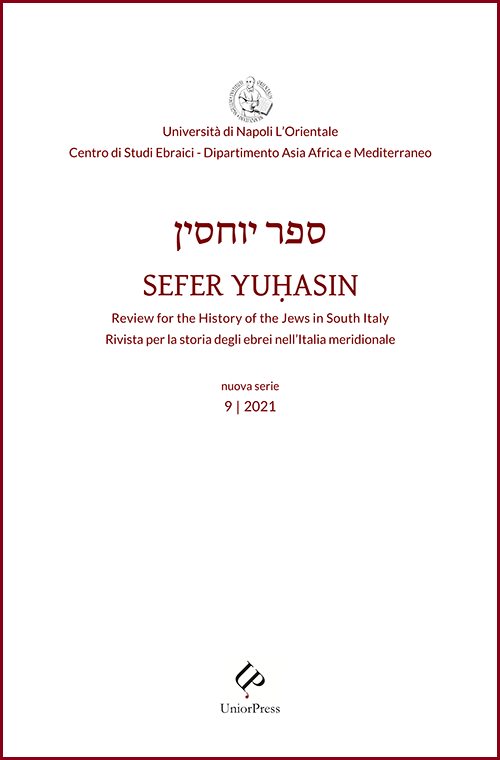Bolli con menorah su anfore Keay LII e lucerne di età bizantina da Napoli
DOI:
https://doi.org/10.6093/2281-6062/8685Abstract
A menorah seal impression on a Keay 52 fragment and a Byzantine lamp from Naples
In this article, there are presented two items linked, in different ways, with the Jewish presence in Late Antique and Byzantine Naples. Both of them are fairly recent finds, within the framework of the estensive excavations carried out for the new urban subway system, that brought about a number of unexpected archaeological discoveries. The first item is a fragment of a handle of a Keay 52-type amphora, dated to the 5th century and bearing a seal impression with a barely legible menorah. Similar impressions are already known, on the same kind of support, from Rome and Calabria, and have been connected with the production and distribution of kasher wine from South Calabria to other places in Italy: Naples included, as we now know. The second object is a ‘slipper lamp’ of the Byzantine period (possibly, 8th century) bearing a problematic symbol which has been variously identified, on similar lamps, as a palm branch, a candlestick, or a menorah. This lamp is, unfortunately, decontextualized, and its original meaning cannot be ascertained, but it is possible that this kind of decoration was formulated to appeal to both Christian and Jewish users.
Downloads
Downloads
Published
How to Cite
Issue
Section
License
Gli autori che pubblicano su questa rivista accettano le seguenti condizioni:
- Gli autori mantengono i diritti sulla loro opera e cedono alla rivista il diritto di prima pubblicazione dell'opera, contemporaneamente licenziata sotto una Licenza Creative Commons - Attribuzione che permette ad altri di condividere l'opera indicando la paternità intellettuale e la prima pubblicazione su questa rivista.
- Gli autori possono aderire ad altri accordi di licenza non esclusiva per la distribuzione della versione dell'opera pubblicata (es. depositarla in un archivio istituzionale o pubblicarla in una monografia), a patto di indicare che la prima pubblicazione è avvenuta su questa rivista.
- Gli autori possono diffondere la loro opera online (es. in repository istituzionali o nel loro sito web) prima e durante il processo di submission, poiché può portare a scambi produttivi e aumentare le citazioni dell'opera pubblicata (Vedi The Effect of Open Access).


